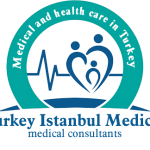Tube Baby (IVF)
What is IVF?
The IVF (in vitro fertilization) process, commonly known as in vitro fertilization, is the event of fertilization by the sperm in a laboratory environment outside of the body.
IVF treatment was first applied in 1978. In this period, it was intended to be applied only to women with obstructed or damaged tubes, but it has developed as a method in which 80 per cent of infertility problems are solved, including many male infertilities.
Among the assisted reproductive methods, this method is the most successful; Although the couple has regular and unprotected sexual intercourse for one year, they cannot be used in cases where they cannot provide pregnancy.
General İnformation About IVF Treatment
In vitro fertilization is a form of treatment in women who cannot conceive with conventional methods. It is based on the principle of transferring embryos to the uterus as a result of combining male (sperm) and female (egg) progeny cells under laboratory conditions. In vitro fertilization is carried out spontaneously (in vitro fertilization) or by human hand, by the introduction of a single sperm into a single egg (microinjection).
In vitro fertilization has started to be used in women who have had permanent damage to their tubes as a result of infection or surgery. Today, endometriosis, unexplained infertility cases and male infertility, in vitro fertilization treatment is successful.
When is IVF Treatment Decided?
Unprotected women who cannot become pregnant despite regular sexual intercourse for 1 year; It is considered infertile and can start IVF treatment. However, it may not be right for women older than 37 to wait a year. In this regard, older infertile women should consult an infertility specialist if they cannot continue to have regular sexual intercourse for 6 months.
Causes of IVF Treatment
- Advanced maternal age, reduced egg reserve and quality of eggs
- Male motive factors such as decreased sperm motility and quality, azoospermia, varicocele
- Problems with intrauterine and fallopian tubes
- cysts
- Infertility without cause
What is the Chance of Success in an IVF?
In normal couples without any procedure, the live birth rate during a normal menstrual period is 27.7%. This rate is 40-45% in IVF cycles.
IVF Treatment Options
- In Vitro Fertilization Without Medication
- Comfortable Tube Baby
- Natural In Vitro Fertilization
- In Vitro Fertilization By Pill
- Microinjection
IVF Stages
- Detection and treatment of sperm fertilization (anomaly and sperm DNA damage)
- Treatment of Hormonal disorders and ovulation problems
- Surgical applications that increase the chances of pregnancy (Hysteroscopic and laparoscopic surgeries))
- Urology and Andrology consultancy
- Drug-free in-vitro (IVM)
- Consultancy service with international centres
- IVF and ICSI techniques
- Microtese, PESA and TESA applications fertilizing sperm selection (IMSI, double breaking CHIP) techniques
- Laser applications to eggs and embryos (shingles, Drilling and Assisted Hatching/nesting)
- Detection and treatment of sperm fertilization (anomaly and sperm DNA damage)
- Special development cabinets (incubators) for the couple’s embryos)
- Embryo observation system (Empryoscope ))
- Egg and embryo support (cumulus cells ” Co-Culture”)
- Pregnancy vaccine (balancing the immune system of the intrauterine membrane)
- Balancing technique (balancing of the embryo and intrauterine membrane for pregnancy)
- Increased intrauterine membrane embedding processes (Injury / fallow technique)
- Blastocyst transfer
- Embryo and blastocyst biopsies and pre-pregnancy genetic separation (PGD, PGS, CGH))
- Sperm, egg and embryo freezing
- Supportive treatments that increase the likelihood of conception
- Woman-specific drug selection and dose adjustment
- Double special fertility coefficient test
- Stress and anxiety reduction techniques
- Psychological relaxation applications
- Treatment information meetings
IVF treatment is a five-stage method. Each centre completes the treatment by following these five stages. Although the number of stages and names may be expressed differently in some sources, the applied tube stages and processes are standard.
The infertility problem of the couple determined to be suitable for treatment is determined and the drug procedure is determined. This stage is very important. The treatment method determined according to the problem of infertility and the characteristics of the couple are the most important factor affecting the chance of success in IVF treatment. Candidates determined to be suitable for treatment; on the 2nd or 3rd day of menstruation.
Stimulation of the ovaries
The stimulation of the ovaries is aimed at obtaining multiple eggs. For this reason, the mother should use various drugs. This period, which started on the 3rd day of the menstrual period, lasts approximately 12 days. The expectant mother should go to the centre frequently at this stage. In this way, egg development and response to drugs will be kept under control.
Collection of eggs
When the stimulated egg cells reach a certain size and maturity, a cracking needle is made to support the cracking of the eggs. 34-36 after the application of the needle, mature eggs are collected. Egg collection takes approximately 15-20 minutes.
At this stage, local anaesthesia is generally preferred, but general anaesthesia can be applied according to the condition and stress of the expectant mother. At the stage where the eggs are collected, the trainee also gives sperm for example. Sperm cells can be taken by micro TESE method from fathers who do not have sperm cells.
Fertilization phase
The eggs and sperm cells obtained are selected from the highest quality and prepared for fertilization. According to the condition of reproductive cells, these cells are fertilized by classical or microinjection method. In this way, embryos are formed. Embryos are prepared until the day of transfer. Good and the high-quality embryo is selected by special methods.
Embryo transfer
The best quality embryo is transferred to the mother’s uterus. The transfer phase takes approximately 10 minutes. The expectant mother does not feel any pain or pain. After the transfer is completed, IVF treatment is completed. A pregnancy test is performed 12 days after the transfer and the outcome of the treatment is determined.
How many times can IVF be tried?
As long as enough sperm and eggs can be obtained, there is no harm in medically testing the tube baby. However, it is generally known that the chance of pregnancy decreases after the fifth attempt.
Methods for Increasing Success in IVF
Our methods that increase the success of IVF can be listed as follows:
- Genetic Investigations: Identification of genetic problems by investigations such as NGS, Mitoscore, aCGH, CGT, PGD
- EMMA & ALİCE: Two new applications that provide a suitable uterus map for pregnancy and significantly increase the success of pregnancy.
- ERA: Determination of the most suitable day for the attachment of the embryo to the uterus
- IMSI: Examination of semen at 800 times magnification and determination of the best sperm
- ICSI: Injecting sperm into the egg
- Embryoscope: Continuous monitoring of the development of embryos 24/7
- Uterine Resting: Restoring the mother’s uterus to its natural state with the help of the uterus resting technique when fatigue and wear occur after the treatment processes.

